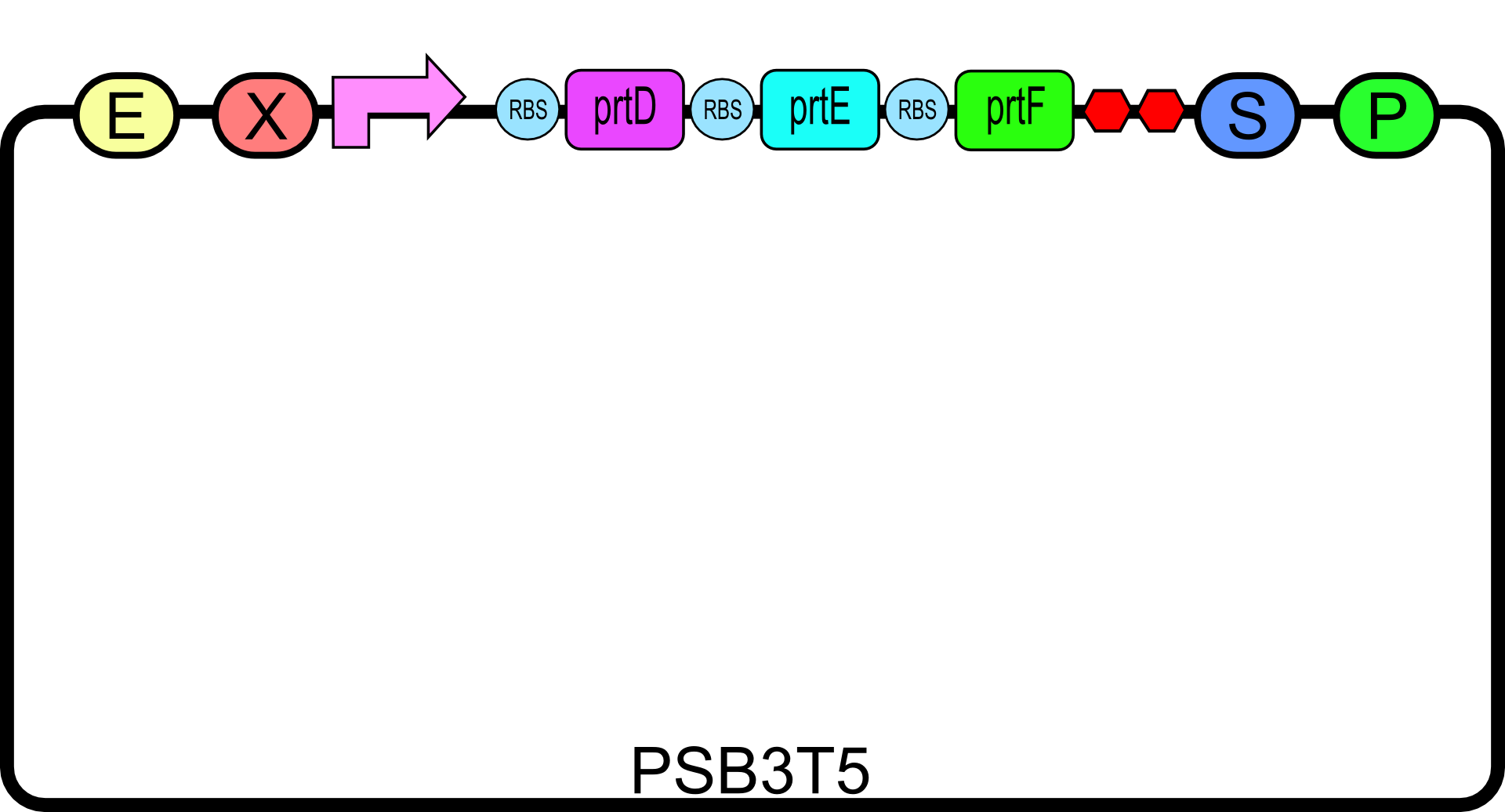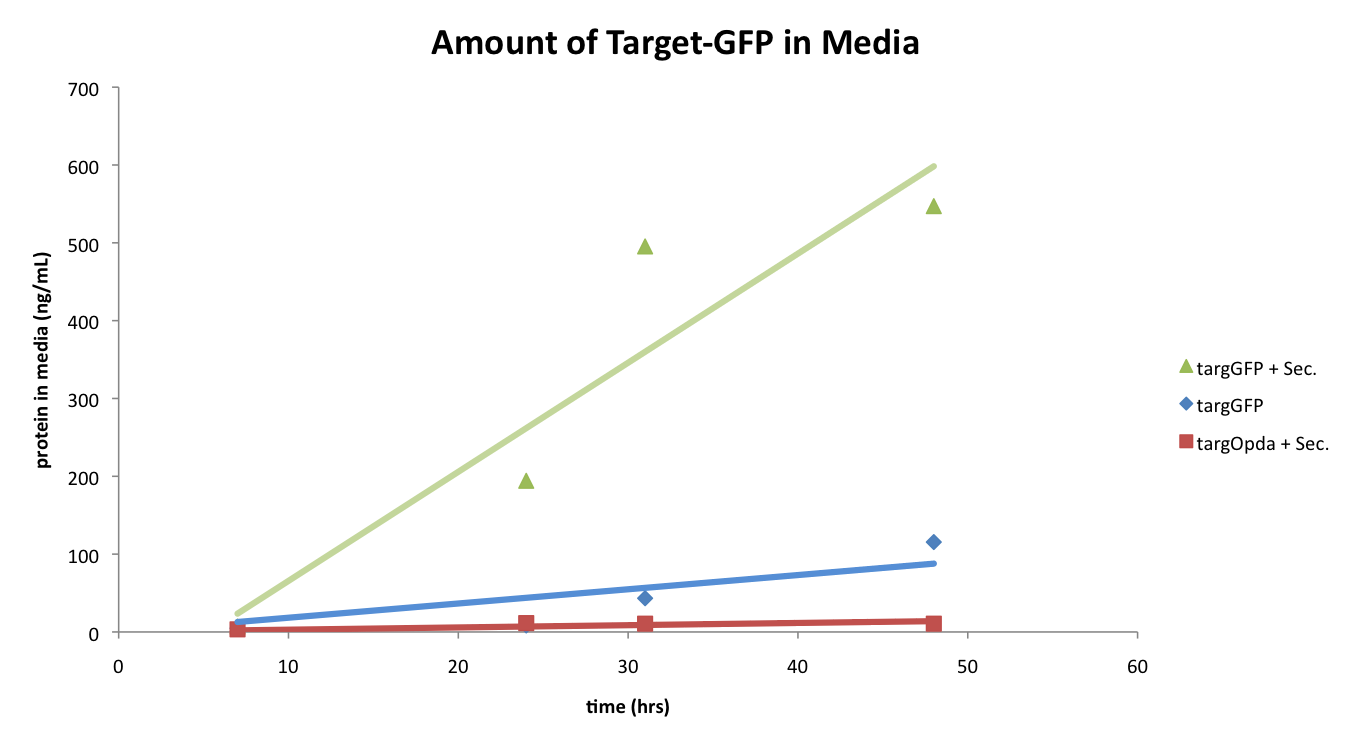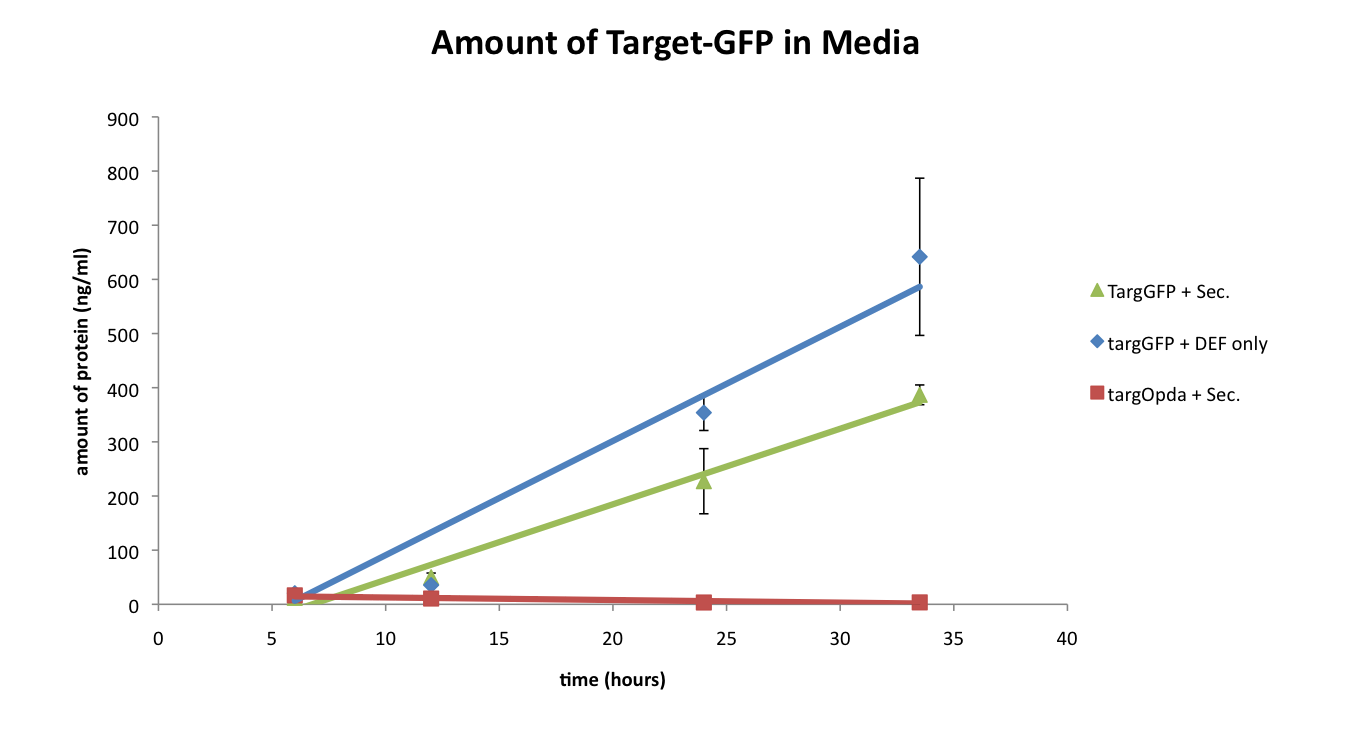Team:Washington/Project/Secretion
From 2009.igem.org
SECRETION BANNER
Background
The secretion system we chose to implement in our project was a Type I system taken from Erwinia Chrysanthemi. This system was chosen because it is able to export proteins to the extracellular space, skipping the periplasm; being able to secrete the protein completely out of the cell and into the media is an important feature that our project requires, making other secretion systems (e.g. systems that are only able to export proteins to the periplasm) less than ideal. We also chose this system because it has been shown in the literature to successfully secret many different proteins, including GFP and lipase, and function in E. coli.
The system is composed of three proteins (prtD, prtE, and prtF) which recognize the protein being secreted via a C-terminus tag (prtB). We synthesized the three genes of the system using the PCR oligo assembly method described here. After synthesis of the genes (with native ribosome binding sites), they were each individually biobricked and then pieced together using biobrick standard assembly to form a single construct. Three different versions of the secretion construct were then created with the placement of one of three different promoters in front of the gene construct, a high (BBa_J23100), a medium (BBa_J23114), or a low (BBa_J23113) strength promoter . All three designs were placed in pSB3T5. For our experiments, only the high strength promoter was used.
Experiments
For the Secretion System our goal was to:
- Construct the Secretion plasmid
- Secrete the Target Protein
Constructing the Secretion System
To create the target vector we first synthesized a coding sequence that would produce the protein as described above. To do this we synthesized a gene from oligo's as described in our Gene Synthesis Protocol.
After creating the target construct, we created and BioBricked an expression vector (BBa_K215000) which would express the target protein upon induction with IPTG. We then added the target construct into the expression vector using standard assembly.
Secreting the Target Protein
To test the functionality of our secretion system, we decided to see how well the system could export the Target protein into the media. To do this, we cloned GFP (BBa_E0040) into our Target vector, and transformed the vector into cells (strain BL21 lacq) containing the Secretion plasmid. The cells containing our TargetGFP vector and Secretion plasmid were then grown in a large culture (50 ml) and expression of the Target protein was induced via IPTG. After a period of growth, the culture was then spun down to separate the cells from the media. The amount of fluorescence found in the supernatant was then used to quantify the amount of Target protein being secreted (a detailed protocol of the experiment can be found here).
Results
In our first round of experiments, two controls were also tested: (1) cells containing only the TargetGFP construct and (2) cells containing the TargetOpdA construct and the Secretion plasmid.
The plot below shows the results of our first secretion test.
As shown above, the cells containing both the TargetGFP and Secretion plasmid released a much higher amount of the target protein into the media when compared to the two controls. This result was quite exciting as it appeared that our secretion system was working great.
However, after verifying these results, we realized that one of the controls was not entirely fair since the culture containing only the TargetGFP vector had just one plasmid and thus was only grown with one antibiotic (ampicillin). To make a more comparable control, the cells containing only the TargetGFP construct were also transformed with a promoter-less Secretion plasmid, and the experiment was repeated.
The plot below shows the results of the second secretion test.
As shown above, the addition of the promoter-less secretion plasmid into the TargetGFP control also caused the culture to release an elevated amount of target protein into the media. From this result, it appeared that the Secretion system was not responsible for the elevated amount of TargetGFP in the media, but that it was actually an artifact caused by the extra plasmid that the Secretion system was on (pSB3T5).
A couple different variations of the above experiments were then tried to show secretion: We tried varying the amount of IPTG used for induction (1-500 uM) to make sure we weren't overloading the cells, and we also changed the cell strain from BL21(lacq) to DH5a; neither variation yielded a positive result (data not shown).
Conclusion
Based on the results we collected, we have yet to show that the Secretion system is functioning. However, this system has been shown to work properly in the literature, and there are many parameters that we have yet to optimize.
Citations
Secretion system literature: Palacios et al [1]
 "
"




